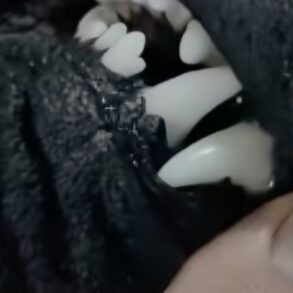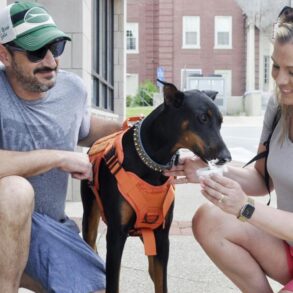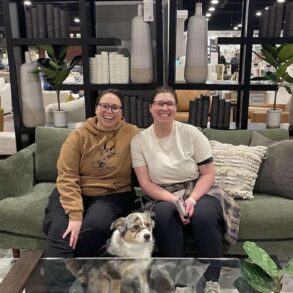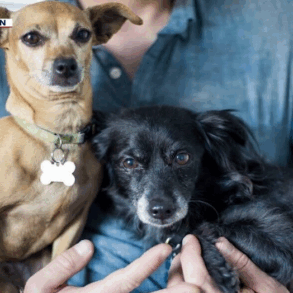A study of dog caregivers in the United Kingdom found that the parenting styles individuals experienced in childhood (from their parents or caregivers) are associated with how they treat their dogs as adults. In particular, participants who experienced a permissive parenting style in childhood were more likely to use the same style with their dogs. The research was published in Animals.
Current estimates indicate there are around 700 million dogs worldwide. Of these, approximately 470 million are kept as household pets. Almost every second household in the United States has a pet dog, while around 31% of Korean households and 50% of Filipino families own one or more dogs, representing a notable increase from previous decades.
Studies also suggest that the treatment of dogs has largely evolved in modern times. In earlier eras, human-dog relationships tended to center around human needs. However, recent decades have seen dogs being integrated into families and actively participating in family life. Researchers note that more people now display caregiving behaviors toward dogs that were once reserved for other humans, primarily children. For example, a study found that when mothers interact with their children and with family dogs, similar patterns of oxytocin level increase and brain activation occur.
Study authors Chih Hsin Kuo and Sharon Kessler sought to explore whether the parenting styles individuals experienced as children influence the way they care for their dogs. They specifically wanted to examine whether intergenerational transmission occurs between participants’ received parenting behaviors in childhood and their own dog-directed parenting styles. They also investigated whether orientation toward animals played a role in this relationship.
The study included 391 dog caregivers who completed an online survey using Testable. Most participants were over 25 years of age, with 96% being women. Approximately half of the participants were from the United States and the United Kingdom, and 35% had children in their households. Additionally, the authors interviewed 10 participants via Microsoft Teams.
Survey participants completed assessments of the parenting styles they experienced as children (using the Parenting Styles and Dimensions Questionnaire), parenting style toward dogs (an adaptation of parenting style items for dogs—the Dog-Friendly version of the Parenting Style and Dimensions Questionnaire), and orientation toward non-human animals.
The results confirmed an intergenerational transmission of parenting styles from participants’ childhoods to their interactions with their dogs. Notably, participants who experienced a permissive parenting style as children were more likely to apply the same style with their dogs. The only exception was among Asian participants, where this association was absent. Permissive parenting is characterized by high warmth and responsiveness but low demands and discipline, with parents often being lenient, avoiding strict rules, and allowing significant freedom in decision-making.
Participants who experienced authoritative parenting were less likely to be permissive with their dogs. Authoritative parenting combines warmth and support with clear rules and high expectations, fostering independence while maintaining consistent discipline and open communication.
A protectionistic orientation emerged as the most common attitude toward dogs, followed by a humanistic orientation. A protectionistic orientation emphasizes control, discipline, and using animals for specific tasks or purposes, while a humanistic orientation focuses on treating dogs as companions, emphasizing emotional bonding, care, and their role in the family.
The authors tested several statistical models proposing that orientation toward dogs mediates the relationship between the parenting styles participants experienced in childhood and the styles they display toward their dogs. In other words, they suggested that childhood parenting styles shape participants’ orientation toward animals, which in turn influences their parenting style with dogs.
The results supported this relationship. In these models, a protectionistic orientation toward dogs reduced the likelihood of authoritarian caregiving toward dogs, while humanistic and protectionistic orientations increased the likelihood of permissive caregiving.
“We detected cross-species, intergenerational transmission effects for permissive parenting in that participants who experienced permissive parenting were likely to use it with their dogs and during interviews, participants indicated that they were deliberately replicating their own experiences of receiving responsive parenting,” the study authors concluded.
“Similarly, orientation toward non-human animals played a crucial mediating role between received parenting style and dog-directed parenting style in that protectionistic attitudes reduced the likelihood of participants who experienced authoritarian parenting replicating that with their dogs and a humanistic attitude increased the likelihood that they would compensate for an authoritarian upbringing by being permissive with their dogs.”
The study sheds light on the connection between experienced parenting styles in childhood and how people treat their dogs as adults. However, the study relied on self-reports, which may introduce reporting bias. Additionally, the study’s design does not allow for cause-and-effect conclusions to be drawn from the data.
The paper, “Intergenerational Transmission of Human Parenting Styles to Human–Dog Relationships,” was authored by Chih Hsin Kuo and Sharon Kessler.
This post was originally published on this site be sure to check out more of their content.













































